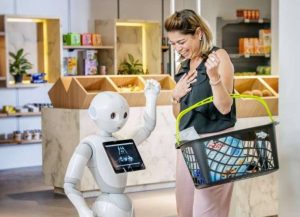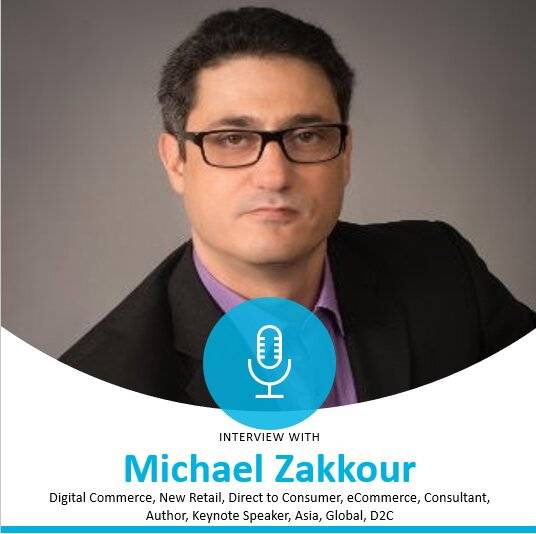Today we speak with Astrid F. Kowlessar, Director of Business Strategy in Vezta & Co.
Hi Astrid. Could you assess the current context of the retail sector?
 The retail sector is undergoing structural changes mainly due to consumer demand for a more hands off, individualized experience, driven by technology and the buying power shifting to millennials and Gen Z. Retail outlets were once the main places to socialize. With the socialization factor now diminishing, brick and mortar retail needs to focus on products that have more inelastic demand, or combine their services with more digital type products.
The retail sector is undergoing structural changes mainly due to consumer demand for a more hands off, individualized experience, driven by technology and the buying power shifting to millennials and Gen Z. Retail outlets were once the main places to socialize. With the socialization factor now diminishing, brick and mortar retail needs to focus on products that have more inelastic demand, or combine their services with more digital type products.
Do you think the offline retail will disappear?
Definitely not! We are still physical beings living in physical localities! The retail sector now needs to morph into a different type of structure both in size and in service. For instance, retailers such as pharmacies would remain brick & mortar simply due to the nature of the product and service offered. We will see more of a trend towards boutique malls being patronized as Gen Z grows into buying power. With regards to large shopping centers, I have noticed two trends. First, traditional large shopping centers are beginning to cater more to tourists and “out of state” shoppers who are bargain hunting. Second, traditional malls may drop this sort of cost leadership approach and opt to become only high end luxury malls, with mainly designer stores.
The offline retail won´t disappear! We are still physical beings living in physical localities
What do you think about online retail?
 Online retail has become so savvy over the past decade! Mobile shopping is now extremely fast and efficient due to smartphone app development, and it’s improving every minute. Services such as Amazon Prime has completely revolutionized the buying experience for all retail segments. I personally shop for most products online and have them delivered right to the door step.
Online retail has become so savvy over the past decade! Mobile shopping is now extremely fast and efficient due to smartphone app development, and it’s improving every minute. Services such as Amazon Prime has completely revolutionized the buying experience for all retail segments. I personally shop for most products online and have them delivered right to the door step.
What does it take for a online store to work?
Ease of use is the key. Digital transformation in retail has lowered barriers to entry in most segments, so competition is steep. It’s necessary to have an extremely user friendly site or app that allows for quick find, quick checkout, online payment with fast and cost effective time to delivery.
Companies are more data driven to understand consumer needs and to provide customer success
What is the biggest problem or weakness that it has to face?
 One defect of online retail comes into play with regulatory issues. For instance, let’s take buying a car. Companies such as Carvana offer the possibility of buying the car online almost in a vending machine fashion. However, most consumers may feel the need to deal personally with a sales representative since the product, cars, have such regulatory issues such as lemon laws, insurance coverage, financing issues, safety inspection issues etc. Online retail has advanced to offer such complementary services, but still falls short of dealing with in-person representatives.
One defect of online retail comes into play with regulatory issues. For instance, let’s take buying a car. Companies such as Carvana offer the possibility of buying the car online almost in a vending machine fashion. However, most consumers may feel the need to deal personally with a sales representative since the product, cars, have such regulatory issues such as lemon laws, insurance coverage, financing issues, safety inspection issues etc. Online retail has advanced to offer such complementary services, but still falls short of dealing with in-person representatives.
In the current context, what role does technology play in retail?
Technology rules retail! Internally companies are more data driven to understand consumer needs and to provide customer success. Data science allows retailers to use data mining to provide very specific insights on customer experience. From a product standpoint, consumers are looking for retailers to offer tech solutions both online for a more personalized experience as well as in the brick and mortar service. For instance, personalized 3D online fitting rooms, as well as smart fitting rooms in the brick and mortar outlets are trending in clothing retail.
We’re moving towards a structure of totally combined brick & mortar and online shopping experiences for ALL retail segments
Highlights a current technology or innovation that you believe is setting a trend.
 Mobile shopping and mobile payments are definitely mainstream now. It’s so easy to pay with services such as Apple Pay from the phone that paying with actual plastic is beginning to decrease, at least with millenials and Gen Z. So, retailers should get very savvy on mobile content, and ease of use for mobile payments.
Mobile shopping and mobile payments are definitely mainstream now. It’s so easy to pay with services such as Apple Pay from the phone that paying with actual plastic is beginning to decrease, at least with millenials and Gen Z. So, retailers should get very savvy on mobile content, and ease of use for mobile payments.
How is customer loyalty achieved?
It depends on the demographic. It’s still very important to have personalized and consistent content for the older demographics such as baby boomers and Gen X. However, for millennials and Gen Z you need fast, easy to use digitized systems to keep them coming back for more.
Brick & mortar retail will be more cozy and personalized in size and service
How do you see the future of retail?
 The old retail paradigm was mall centered with larger than life outlets. We’re moving towards a structure of totally combined brick & mortar and online shopping experiences for ALL retail segments. Brick & mortar retail will be more cozy and personalized in size and service. Mobile smartphone and smartwatch retail has taken off, and can easily dominate purchase and payments over the next three years.
The old retail paradigm was mall centered with larger than life outlets. We’re moving towards a structure of totally combined brick & mortar and online shopping experiences for ALL retail segments. Brick & mortar retail will be more cozy and personalized in size and service. Mobile smartphone and smartwatch retail has taken off, and can easily dominate purchase and payments over the next three years.
Astrid F. Kowlessar. Director, Business Strategy. Vezta & Co. United States







